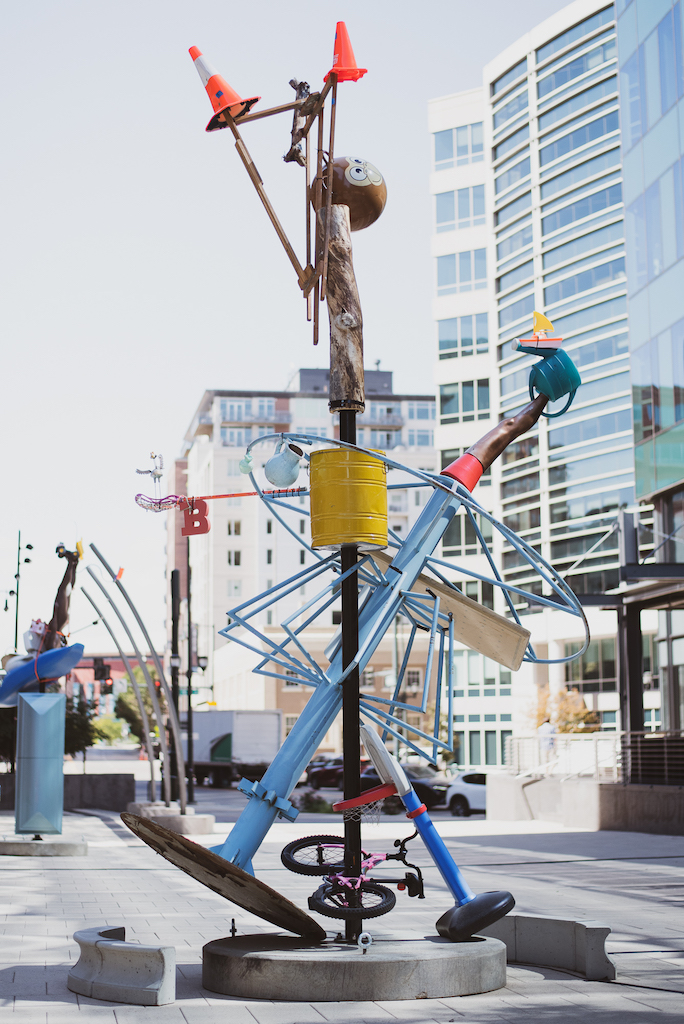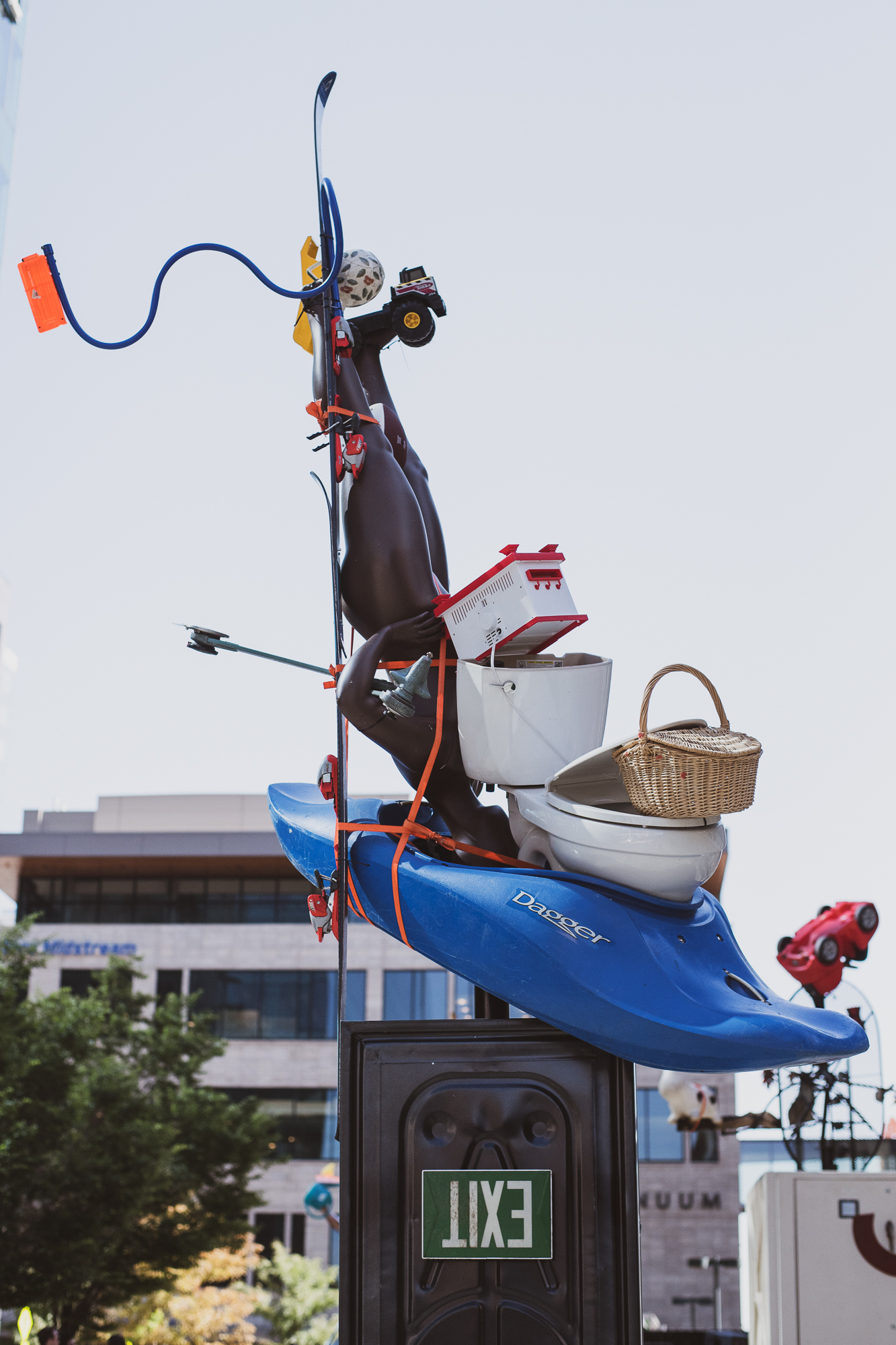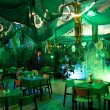Biennial of the Americas has teamed up with Black Cube, Nomadic Art Museum to present this year’s artistic addition to the city. The experience, dubbed Edge Effect features a sculpture installation and digital AR component created by Guadalajara-based artist Gabriel Rico.
After a pause of three years from the last Biennial of the Americas Festival, this year the Biennial of the Americas has taken focus on community-based connection and unification through the use of contemporary art and the urban landscaping of Downtown Denver.

On Wednesday, September 1, Biennial of the Americas and Black Cube held an opening reception for the installation, fully opening the immersive experience to the public. During the reception, Executive Director of Biennial of the Americas FloraJane DiRienzo introduced the project and gave way to speakers such as Margaret Hunt the director of Colorado creative industries, Cortney Lane Stell the Executive Director and Chief Curator for Black Cube Art, Mark Falcone, the Vice Chair of Biennial of the Americas and founder of Continuum Partners and of course the artist, Gabriel Rico. Each speaker gave praises to those who contributed to Edge Effect and explained the importance of the connection between community and art.
“I do think that at the very core, the thing that kept cities alive, even through their worst moments in the 50s and 60s and 70s was the fact that art and culture were always anchored in our center cities. And it is the thing that sort of suggests that these cities, these places will be here perpetually. I think we all look at art and culture as something that is an imprint and part of the cumulative experience of being a member of our species. And it’s part of our cumulative memory. It’s part of how we reflect on who we are and where we are going next. And I just can’t underestimate how important at this particular moment it is that, that this exciting project is planted itself right in this part of our city,” stated Mark Falcone, the Vice Chair of Biennial of the Americas and founder of Continuum Partners.
Many of the speakers gave a look into the thought process behind the collaborative installation and brought to light how those who experience Edge Effect might also question the contemporary aspects of the project.
Stell expressed her found connection between strong contemporary works stating, “when I find a strong contemporary artwork, I often notice that they do two things. They act like a window and they act like a mirror. And they act like a mirror in a way that they are open enough that they help me reveal my own thoughts, my own feelings [and] my own perceptions, yet they’re also open enough and enough clues are given from the artist that you can look at another perspective, namely the artist’s perspective.”
Stell went on to give the story of “the birth of conceptual art” when Marcel Duchamp placed a urinal on its side in an art gallery and signed it R. Mutt. As he did so, he brought the ever-so-elusive question to the front of the table, what is art? Stell then compared that moment to Gabriel’s sculptural creations.
“When Gabriel placed the toilet in the kayak, on top of the coffin, I thought, what a Duchampian moment,” exclaimed Stell.

Edge Effect features La inclusión de mi raza (The inclusion of my race) by Gabriel Rico, a series of five totemic sculptures that have been composed of donated objects from local sources such as benches and trash cans from RTD, logs from the forestry service, kayaks from river rafting and more. Alongside the sculpture installations, Black Cube installed a shipping container with a full detailed description of the installation, the meaning behind the project, an art dossier to assist with the experience and access to a digital AR component.
The AR experience, also created by Gabriel Rico, features the use of an app that integrates four different Colorado animals (a moose, a bear, a mountain lion and a fox) and a few humanoid creatures that “walk around” the installation. Through the app and AR component, installation goers can walk alongside and interact with these creators, fully connecting with both the urban and natural worlds.
The aim of the whole installation is for those who experience it to question the boundaries and borders that are held between various habitats. Through the use of both sculptural pieces and digital experiences, Edge Effect gives a chance to blur the spaces that are divided by social constructs, political challenges and more to then build up on the exploration of the connections in communities, nature and between each individual.
Rico explained, “we worked on this project for the last eight months and my vision [as] an artist is about constructing something we can call a biosphere. However, you can go beyond that concept because it’s not only about humans, it’s about the material world. My conception about this is to be friendly, to open a door. And in that situation, you don’t need to be a professional in contemporary art to understand what you see. And that’s the first question I want to ask myself, what [are] the things in front of you? Can you define it? Can you play with them or is just a piece of art and you cannot touch it?”
Edge Effect is free and open to the public and is located in Tail Tracks Plaza at 1550 Wewatta St., Denver. The installation will be open 24/7 until November 13. Black Cube’s shipping container will be open Wednesday through Sunday, 11 a.m. to 7 p.m.





